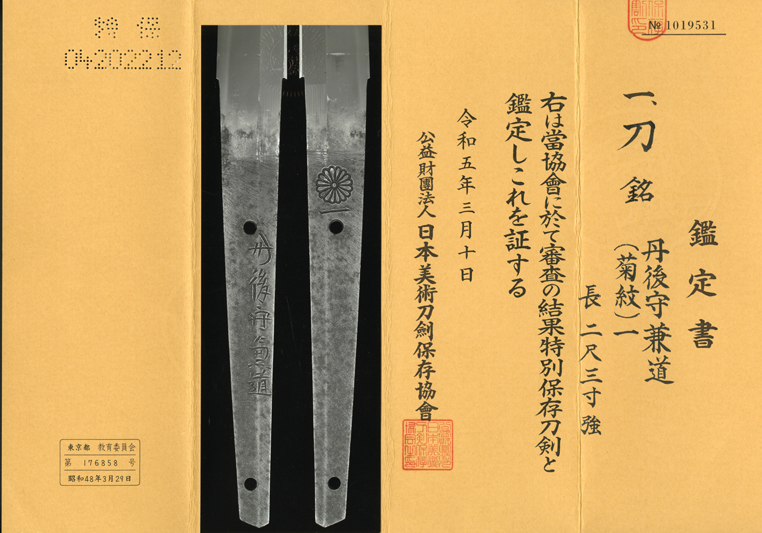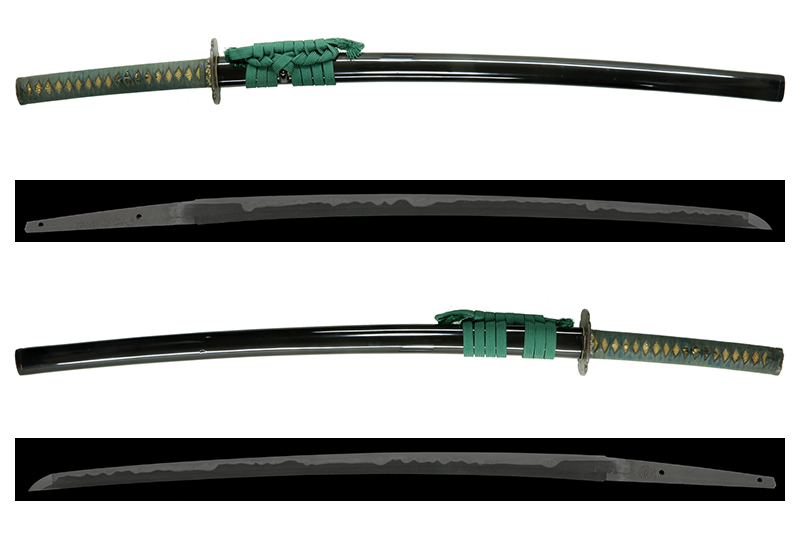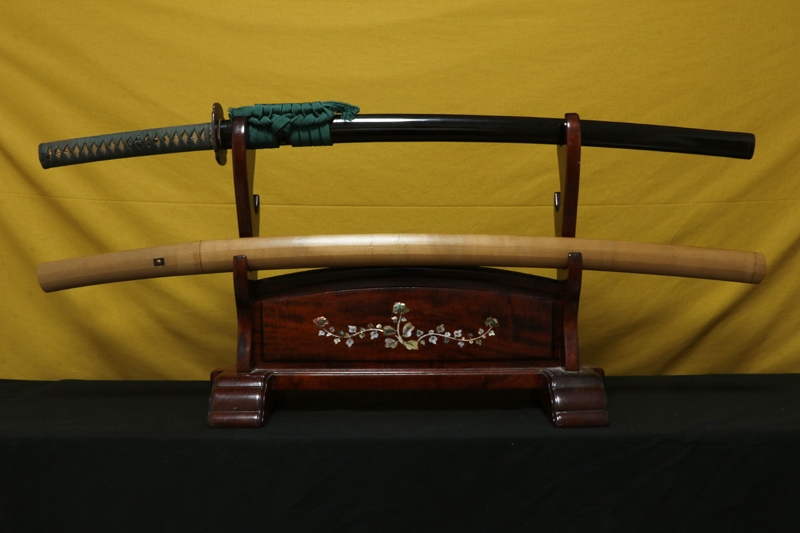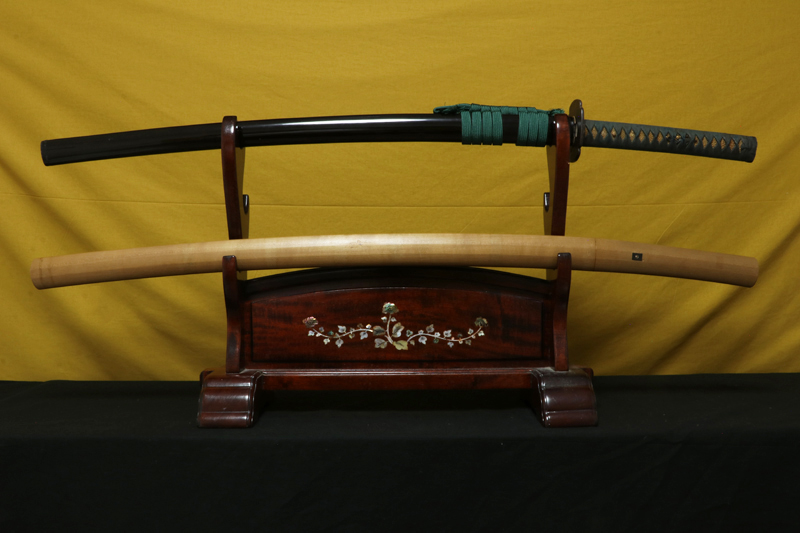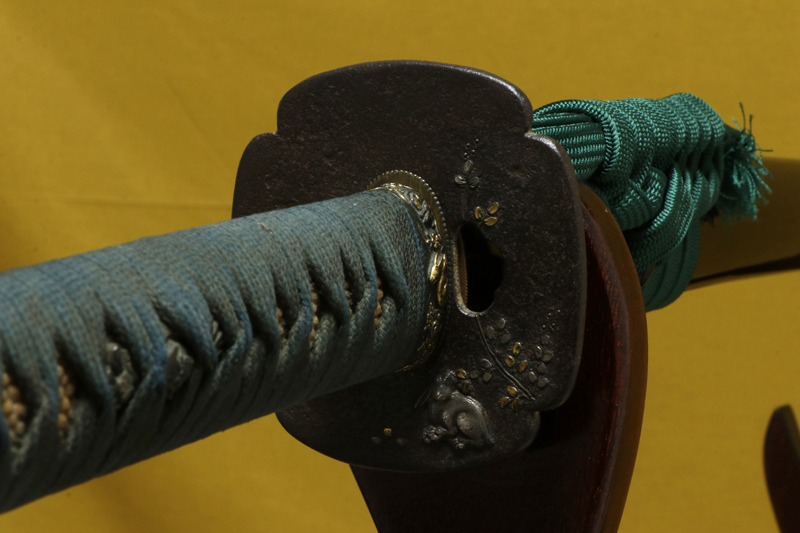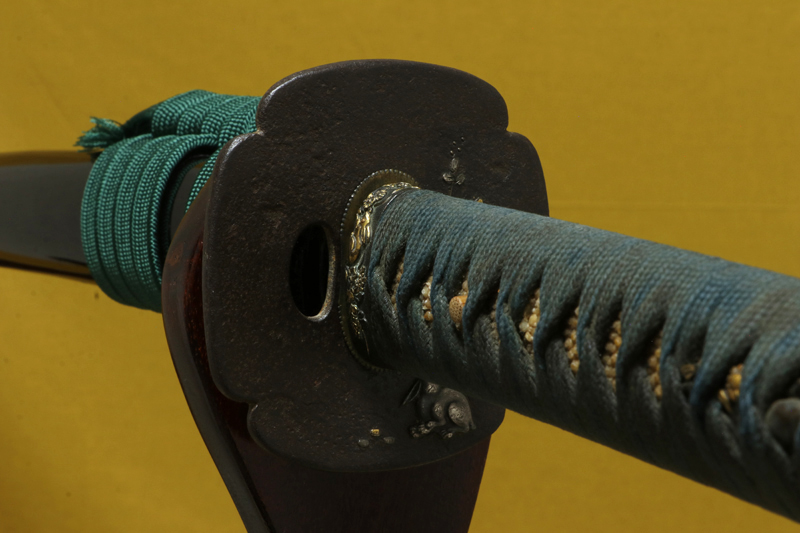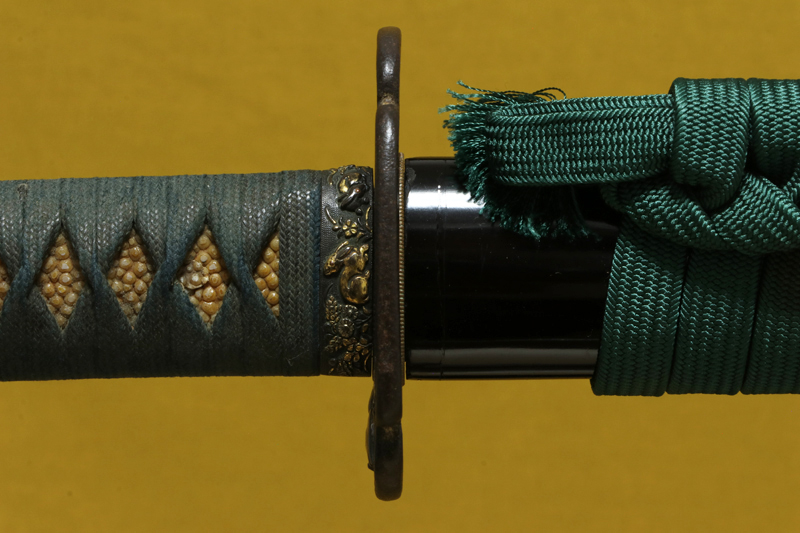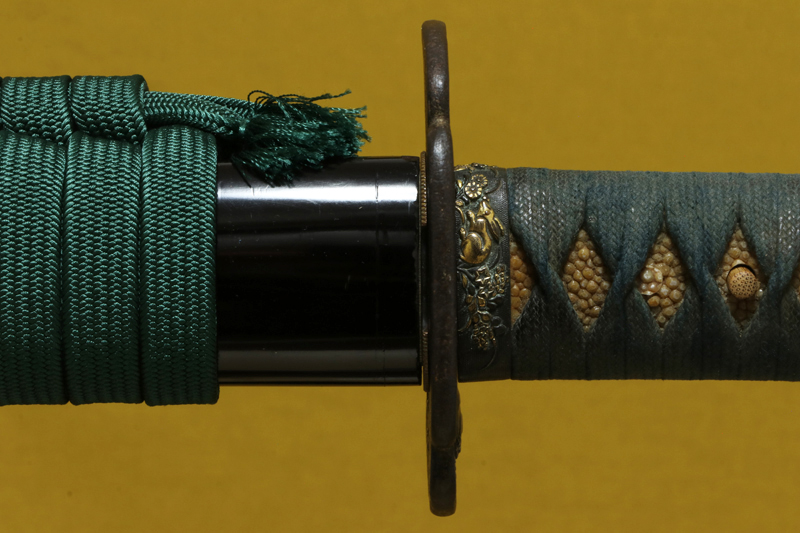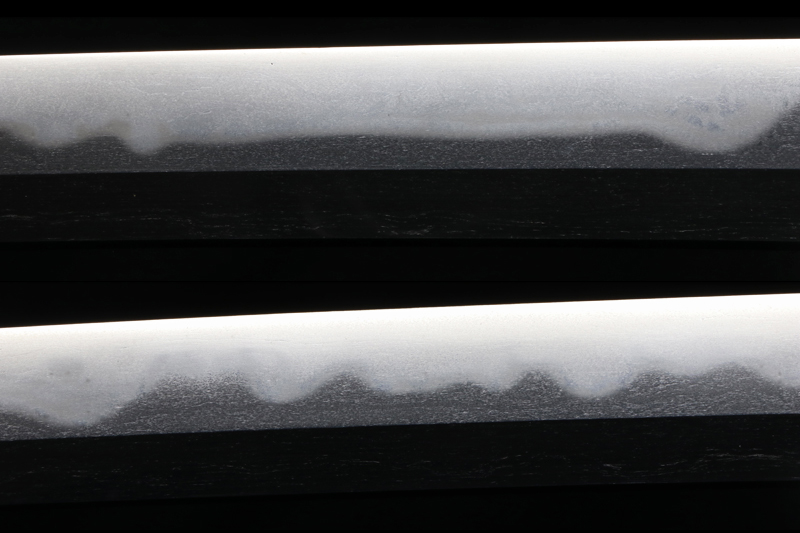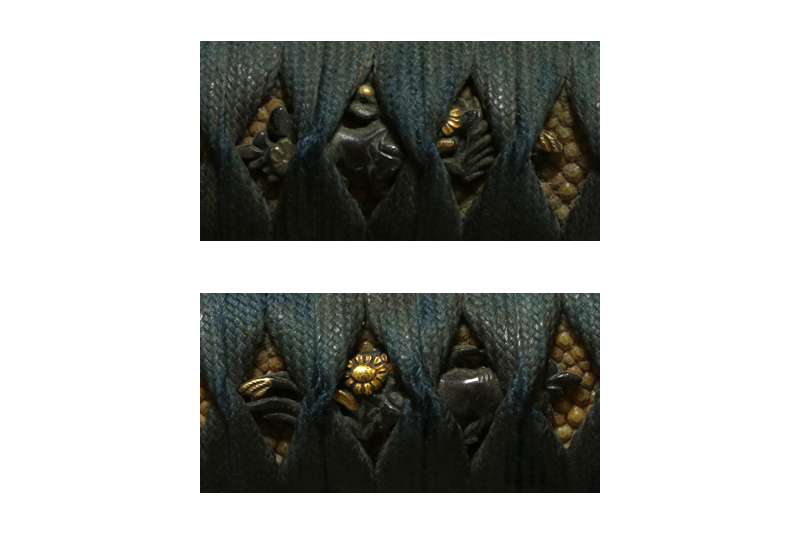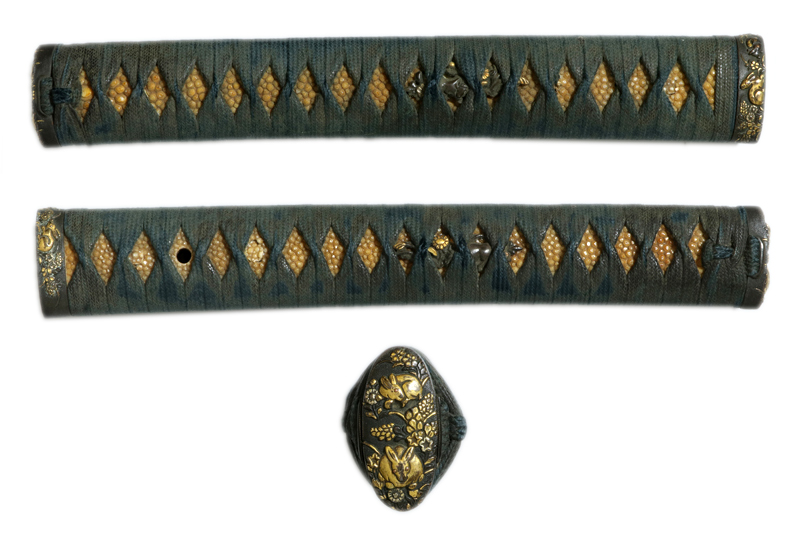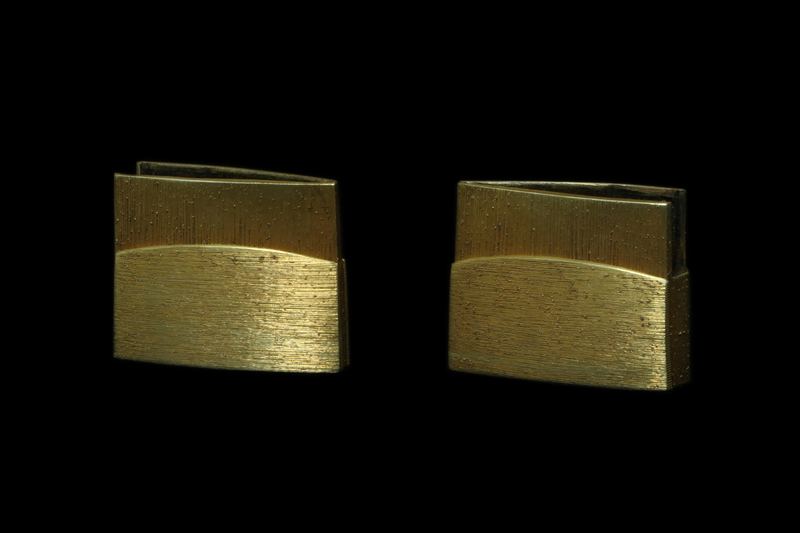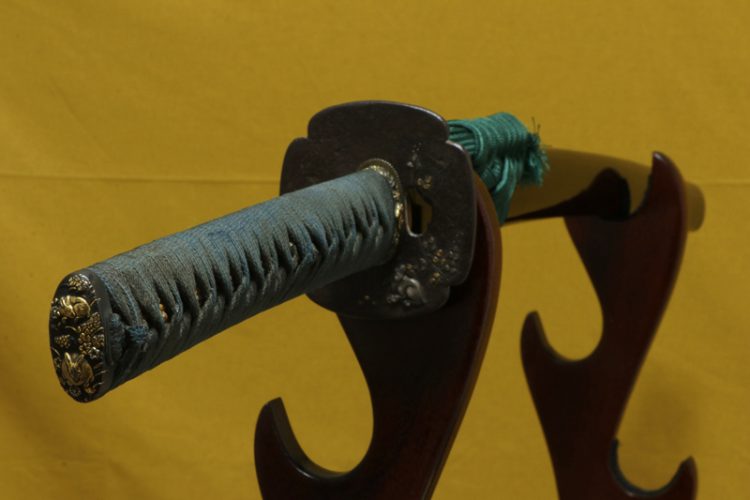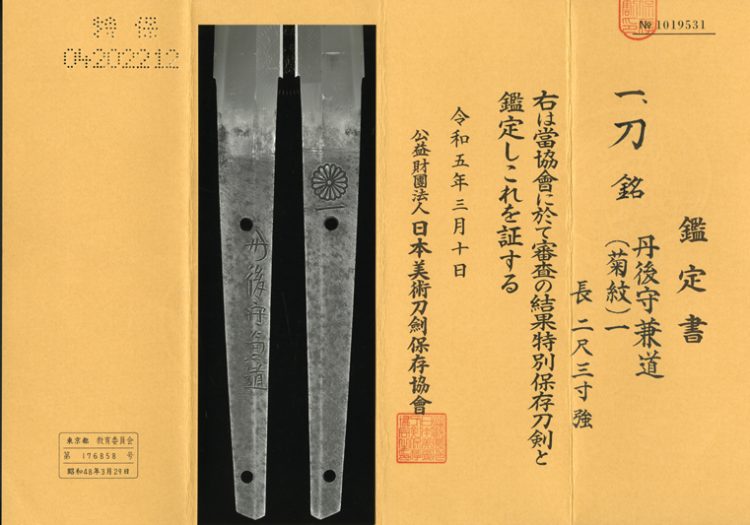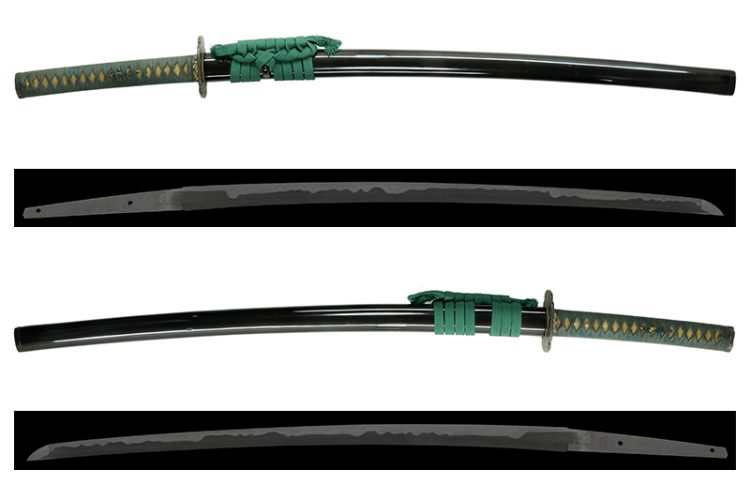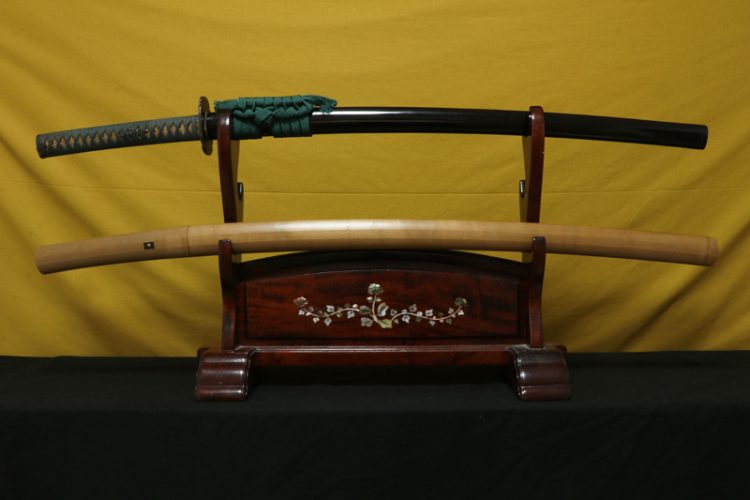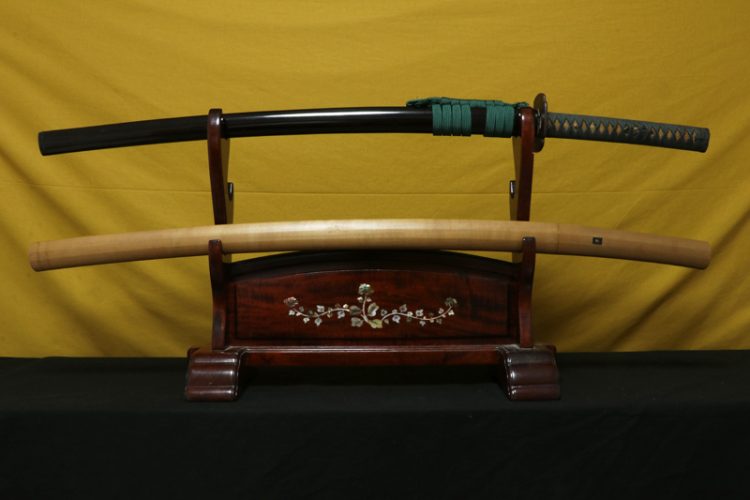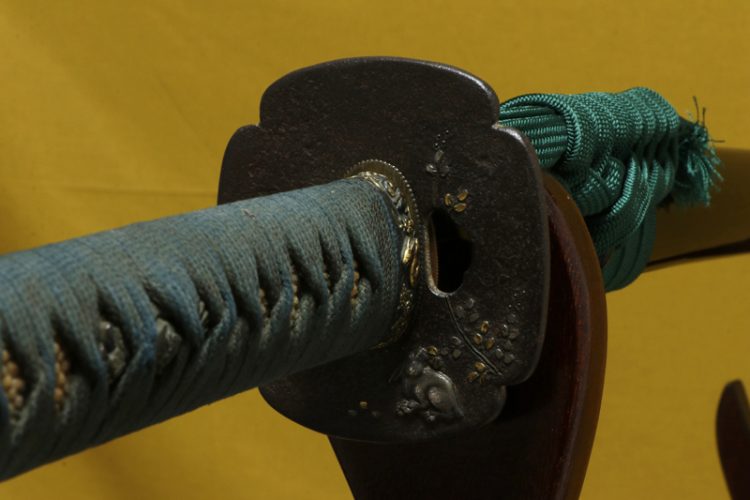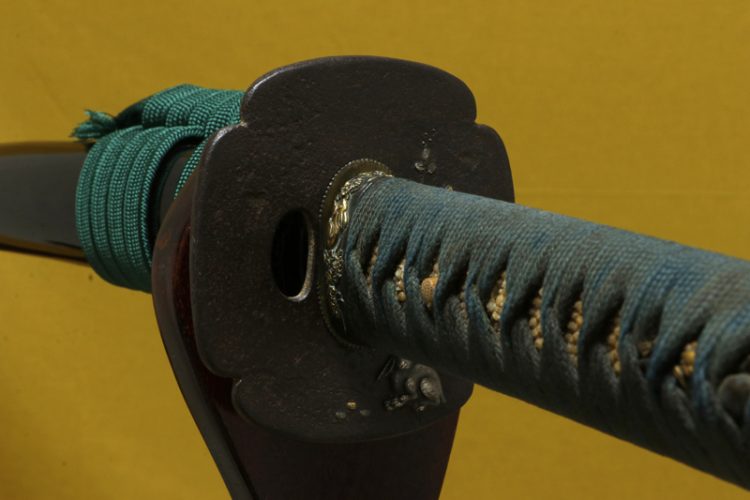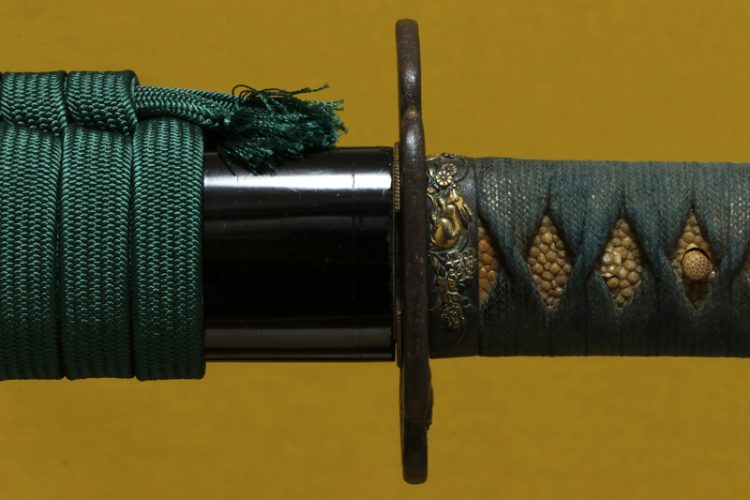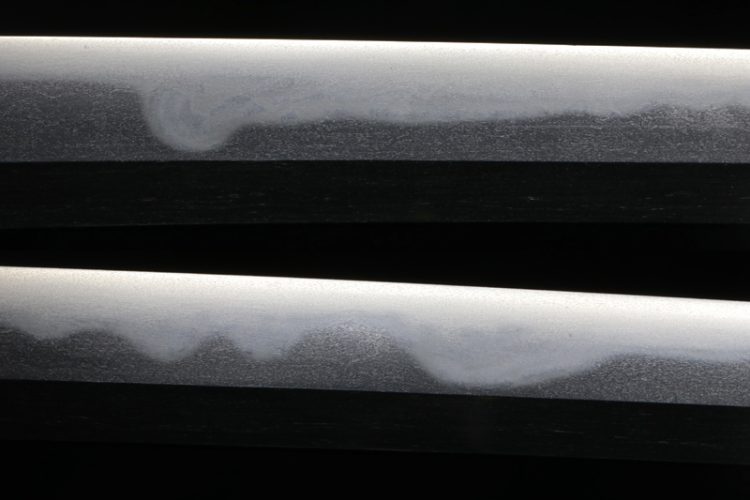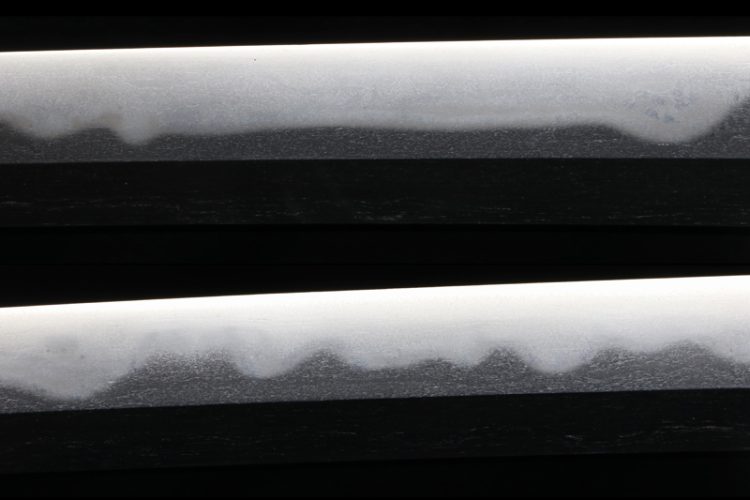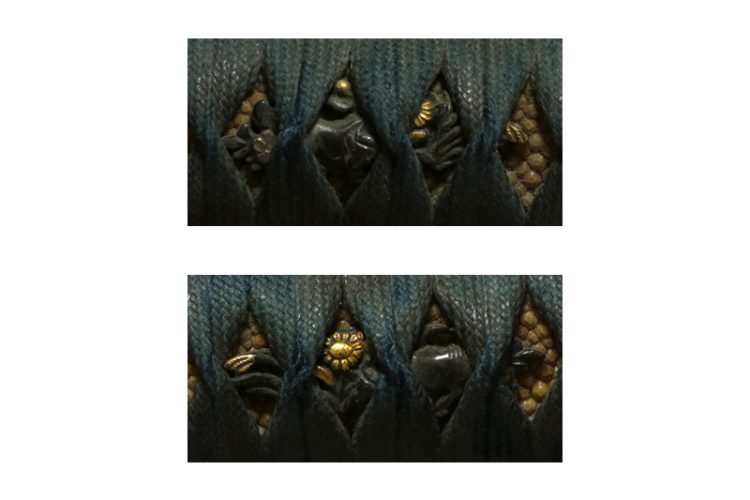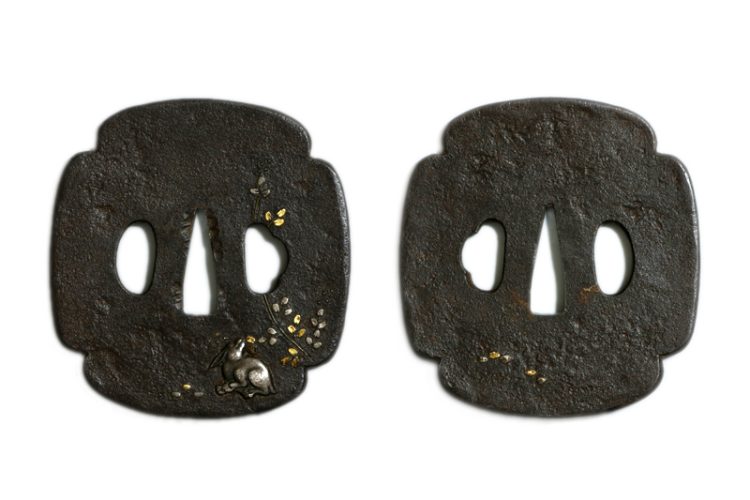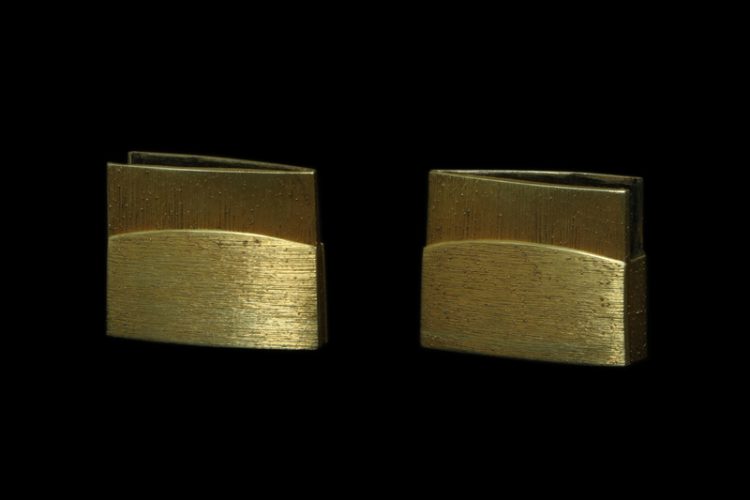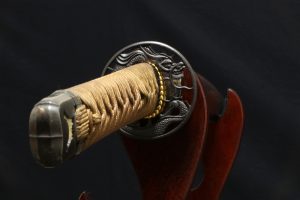説明
「刀姿 sword figure」
鎬造り庵棟、身幅重尋常、鳥居反り中鋒。茎は生ですが区が5mmほど送られている、鑢目は筋違い、茎尻は浅い入山形。「地鉄 jigane」
地鉄は、板目肌に小板目が交じり、地沸付く。「刃紋 hamon」
刃紋は、典型的な大坂焼き出しに互の目乱れ、刃縁は砂流し頻りにかかり簾刃となり、沸厚く付き、刃中は金筋・砂流しがかかる。釯子は乱れ込み小丸に返る。「特徴 detailed」
初代丹後守兼道、京初代丹波守吉道の次男で吉兵衛と言い、初銘は直道とも切る。寛永二年に丹後守を受領し大阪に移る。寛文十二年70歳で没する。
作風は初代が簾刃や互の目に丁子ごころを交えた刃を多く焼くのに対して、二代はそれとは趣を異にして、初代作には見られない匂の深い直刃調のものや、華やかな濤瀾風の大互の目乱れを焼いています。
本作は、互の目に簾刃を焼いた初代兼道の作品で、茎裏には「菊文」と「一」が彫られています。
また付属する拵も程度が良く、白鞘も付属しています。
初代兼道の刀で簾刃は珍しく貴重な逸品です。
Kanmichi I (Tango no Kami Kanemichi) was the second son of Mishina Yoshimichi I (Tamba no Kami) of Kyoto, and was called Yoshihyōe. He initially signed his works as Naomichi. In Kan’ei 2 (1625), he was granted the honorary title of Tango no Kami and moved to Osaka. He passed away in Kanbun 12 (1672) at the age of 70.
In terms of style, while the first generation (Yoshimichi I) frequently produced sunagashi-ha and gunome mixed with chōji-gokoro, the second generation developed a different approach, creating works not seen in the first generation, such as straight suguha with deep nioi and flamboyant ō-gunome-midare in a tōran-ha style.
This piece, however, is by Kanemichi I, featuring a sunagashi-ha in gunome. And onn the reverse of the tang are carvings of a chrysanthemum crest (kikumon) and the character “ichi.”
The koshirae that comes with the blade is also in good condition, and a shirasaya is included as well.
A sunagashi-ha by Kanemichi I is exceptionally rare, making this a highly valuable masterpiece.「拵 Koshirae」
ハバキ(habaki) :素銅地金着二重の腰祐乗。
鍔(tsuba) :鉄地木瓜形兎の図。
縁頭(futikasira):赤銅魚子地兎の図。
目貫(menuki) :赤銅地菊と牛の図。
柄(tsuka) :鮫は親粒が付く、柄巻は正絹納戸色の諸捻り巻。
鞘(saya) :黒呂。「刀剣の状態 condition of blade」
研:良好です。
傷:欠点に成るような傷は有りません。



